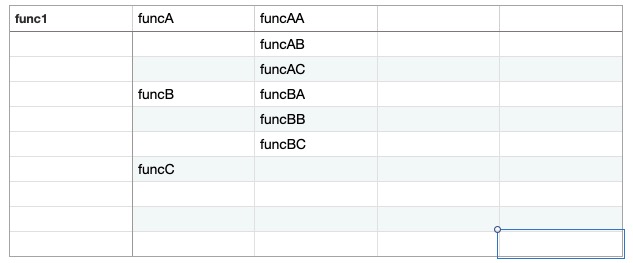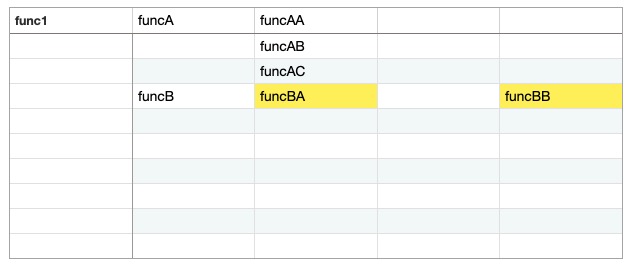Excel can help you when reading the source code
A while ago I had to prepare for a sharing within the front-end group, so I went to read the mobx source code.
As a full-fledged state management tool, the source code execution process for mobx is so long that I often look back at the stack information and find myself a dozen stacks away from where I started.
While mobx is very well named and the code structure is clear, the code execution flow is a bit long.
Whenever I can’t remember the execution context of a piece of code, I always want to be able to keep track of the flow of code execution while I’m looking at the code.
Previously, I thought I could only use flowcharts to document code execution, but drawing flowcharts was a pain, with more than half the time spent drawing and adjusting styles.
I couldn’t concentrate on reading the source code at all, so I never got around to drawing the flowcharts.
I just saw someone on Twitter saying that “The biggest competitor of many ToB products is actually Excel”. I suddenly had an idea, could I use it to record code execution?
With some practice, I found that Excel really does work.
First, let’s talk about my own needs, when reading the source code I focus on roughly only three.
- What are the sequential methods of implementation at the same level?
- Which Method Called by Which Method
- Which method is a bit special and needs a note on it
I therefore record the code execution as follows,
- Records the executing method in the order of “Row”. If there is content above a cell, the program executes the content above the cell before executing the content of that cell.
- Records the method being called in the order of “Column”.If there is content to the left of a Cell, that Cell is called from the left side.
- Rows have higher priority than columns; if there is content above and to the left of a cell, ignore the content to the left.
- Add empty cells to resolve conflicts between rows and columns when necessary.
- Comment additional information on the Cells.
As an example, look at the following code,
function func1 () {
funcA();
funcB();
funcC();
}
function funcA() {
funcAA();
funcAB();
funcAC();
}
function funcB() {
funcBA();
funcBB();
funcBC();
}
It could be recorded in the manner above as follows.
 Excel record
Excel record
There must be logical judgments in the code, how to handle logical branches? Here’s what I’ve come up with for now.
- Record different branches with different columns
- Every branch having the same background color
- Insert one empty column between each branch
For example,
function func1 () {
funcA();
funcB();
}
function funcA() {
funcAA();
funcAB();
funcAC();
}
function funcB() {
if(Math.random() > 0.5) {
funcBA();
} else {
funcBB();
}
}
Record the above code in Excel like this,
 Excel record with condition
Excel record with condition
Useing Excel to record the code execution although rudimentary, not as intuitive as a flowchart, but very hassle-free, and easy to read, I am very satisfied.